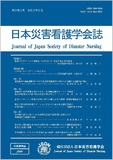Japanese
English
- 有料閲覧
- Abstract 文献概要
- 参考文献 Reference
- サイト内被引用 Cited by
要約
目的:在宅パーキンソン病者の災害に対する備えの内容とその経緯を明らかにする.
方法:在宅で生活しているパーキンソン病友の会会員17人に災害への備えの内容とその経緯について半構造化面接法を行い,M-GTAを用いて分析した.
結果:在宅パーキンソン病者は,【日々の生活も災害時も考えた備え】をしており,それは[命をつなぐ薬を備える][日常的に物を備える][病気が進行しないよう身体を備える][助けてもらえるよう人を備える]の4つが特徴としてあがった.そして,その経緯は[配偶者や家族が支え]となり,[同病者と支え合い助け合う]ことが[病気を受け入れ,楽しみながら生活する]という【前向きに生きる】礎となり,[災害があっても生き延びたい]と【あきらめない】姿勢につながり,【日々の生活も災害時も考えた備え】となっていた.
Objective: To clarify the disaster preparedness of patients with Parkinson's disease living at home and their process of becoming prepared.
Methods: Semi-structured interviews were conducted with 17 patients with Parkinson's disease who live at home and belong to a peer group. The obtained data were analyzed using M-GTA.
Results: Patients with Parkinson's disease living at home were “preparing themselves for both daily life and disasters,” and their preparedness was characterized by 4 approaches: “storing medications to maintain life,” “routinely storing daily necessities,” “performing physical activities to prevent the progression of the disease,” and “maintaining favorable relationships with others as supporters.” This process provided a basis for “leading a proactive life” and “accepting the disease and enjoying life,” with “support from the spouse and other family members” and “mutual support and help among peers.” It also promoted “never-give-up attitudes,” represented by “the will to live even if a disaster occurs,” leading to “preparing themselves for both daily life and disasters.”.
Copyright © 2020, Japan Society of Disaster Nursing All rights reserved.


